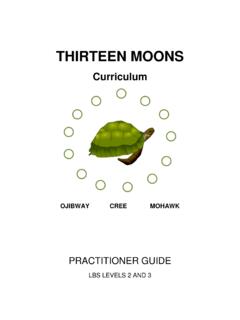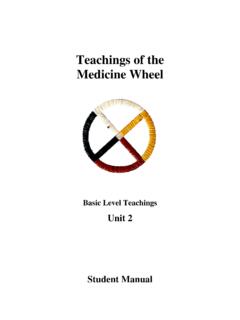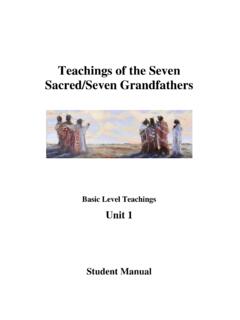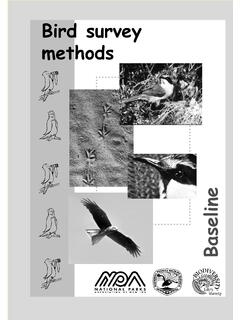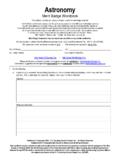Transcription of THIRTEEN MOONS - ONLC
1 13 MOONS Teacher s Guide 0 THIRTEEN MOONS Curriculum OJIBWAY CREE MOHAWK PRACTITIONER GUIDE LBS LEVELS 2 AND 3 13 MOONS Teacher s Guide 1 Ontario Native Literacy Coalition [2010] 13 MOONS Teacher s Guide 2 Table of Contents Aboriginal OJIBWE Introduction & Pronunciation MOONS .
2 9 Numbers ..12 Days of the Week ..14 Seasons ..15 CREE Introduction ..18 MOONS ..19 Numbers ..20 Seasons and Days of the Week ..22 MOHAWK Cycle of 2011-2012 Calendars ..37 2011 moon phases ..38 Sample Calendar Page ..40 Task-Based Writing Activity - Cree Proverb ..46 Calendar Activities ..47 Research Activity ..49 Elder 13 MOONS Teacher s Guide 3 13 MOONS Teacher s Guide 4 INTRODUCTION This practitioner s guide is a tool to help the practitioner construct lessons around the THIRTEEN MOONS of Ojibwe, Cree and Mohawk cultures.
3 The sample lessons can be adapted to each nation. Within the guide are all the tools for each of the First Nations represented, Ojibwe, Cree and Mohawk. It also includes the days of the week, THIRTEEN MOONS , numbers one to thirty-one and the seasons representative to each culture in both English and each nation s language. 13 MOONS Teacher s Guide 5 ABORIGINAL CALENDARS Aboriginal calendars are not the same as our western calendar.
4 They are lunar calendars that are logical to a people who are closely linked to nature. The different times of the moon are closely linked to corresponding important yearly events. In each nation, Ojibwe, Cree and Mohawk there are many different names and variations of the THIRTEEN MOONS . This is why these calendars do not often match up with the typical 12 month calendar. The naming of the MOONS also has a cultural teaching that explains the cycle of life and nature within the respective cultures. Most calendars today use the 12 month cycle even though traditionally the Ojibwe, Cree and Mohawk calendar year followed a 13 moon lunar cycle.
5 For the purpose of this guide we will show the 12 month, January to December calendar and the different moon names and activities associated with each month. When you look at the moon phases for each year you will see that there are 13 MOONS in the calendar year. These differ from year to year. For example in 2011 the extra moon is in the month of July whereas in 2012 it is in August. A special note of interest is from a teaching about turtles. On a turtles back the pattern of scales establishes the combination of numbers that define the lunar calendar cycle.
6 The circle of scales that surround the edge add up to 28, the number of days that comprise the lunar cycle. (28 days from full moon to full moon ). The center of the shell has a pattern of THIRTEEN larger scales which represent the 13 MOONS of the lunar calendar. 13 MOONS Teacher s Guide 6 OJIBWE THIRTEEN MOONS UNIT 13 MOONS Teacher s Guide 7 13 MOONS Teacher s Guide 8
7 INTRODUCTION TO PRONUNCIATION: There are many different dialects and spelling of the Ojibwe language. The following are using the Nichols-Fiero system of spelling. The dialects may differ from one First Nation to another so these can be adjusted to suit your learners individual needs. A short guide to pronunciation using this system is as follows: Written as Sound a as in away aa ah-as in father e long a-as in make i short i as in it ii long e as in seem o long o as in note (sometimes short oo-as in took) oo long o, stretched-as in moan (sometimes long oo-as in boot)
8 13 MOONS Teacher s Guide 9 OJIBWE MOONS MNIDO GIIZIS SPIRIT moon JANUARY The first moon of Creation is Spirit moon . It is manifested through the northern lights. It is a time to honour the silence and realize our place within all of Great Mystery s creatures. MKWA GIIZIS BEAR moon FEBRUARY The second moon of Creation is Bear moon , when we honour the vision quest that began in the fall. During this time, we discover how to see beyond reality and to communicate through energy rather than sound.
9 This moon also gives us a special teaching about the birth of bear cubs. In February, there is one morning when there is a heavy fog in the air and the traditional person knows that this is happening. ZIISSBAAKDOKE GIIZAS SUGAR moon MARCH The third moon of Creation is Sugar moon , as the maple sap begins to run, we learn of one of the main medicines given to the anishnaabe which balances our blood and heals us. During this time, we are encouraged to balance our lives as we would our blood sugar levels. This moon also teaches us the time of year when the sap is running for maple sugar harvest.
10 This is celebrated as the Anishinaabe new year. NAMEBINE GIIZIS SUCKER moon APRIL The fourth moon of Creation is Sucker moon , when sucker goes to the Spirit World in order to receive cleansing techniques for this world. When it returns to this realm, it purifies a path for the Spirits and cleanses all our water beings. During this time we can learn to become healed healers. Another teaching is that the sucker gave up his life for the Ojibwe in the month of February. The previous month, January, is the hardest time of year to get food because of the scarceness of game.
